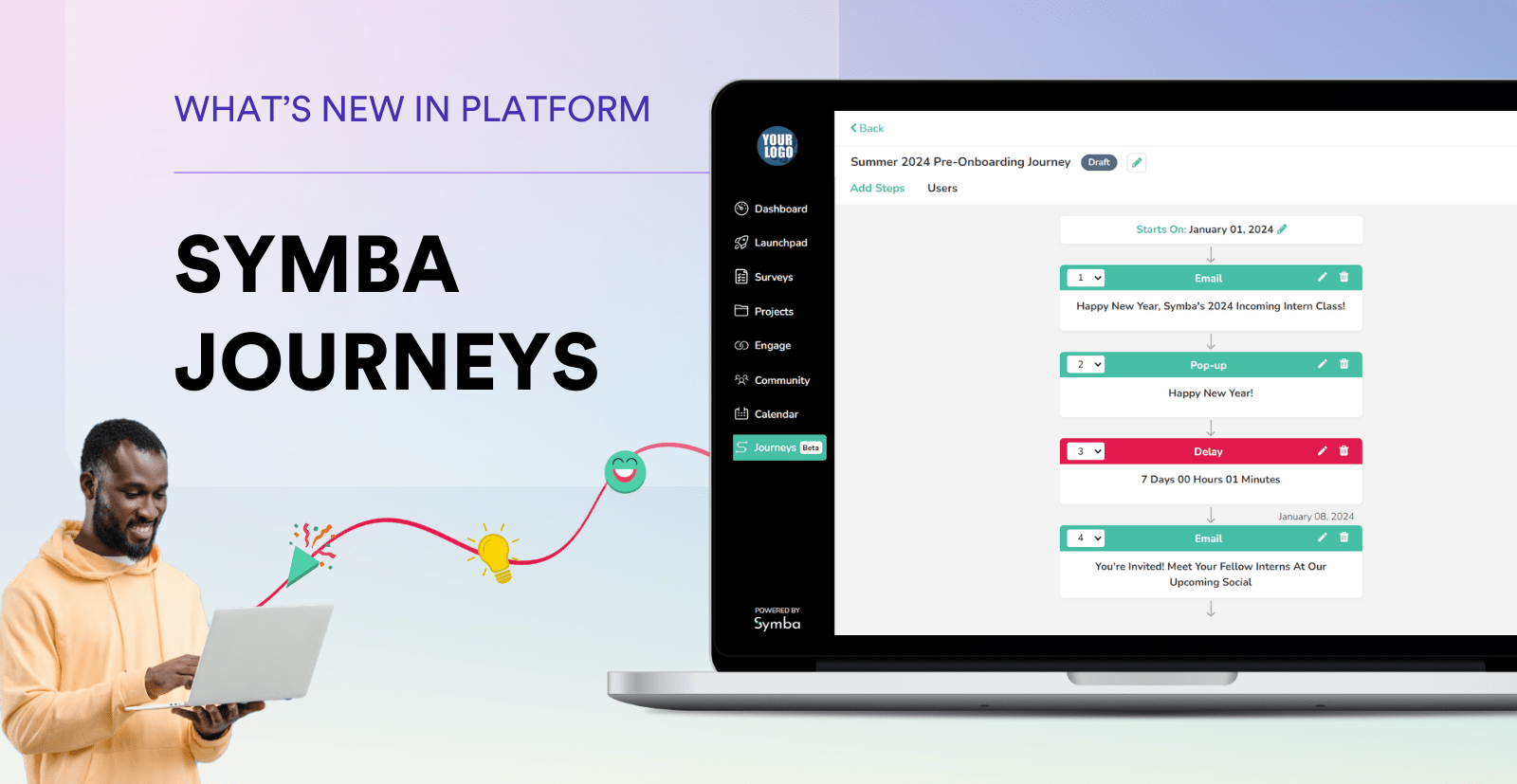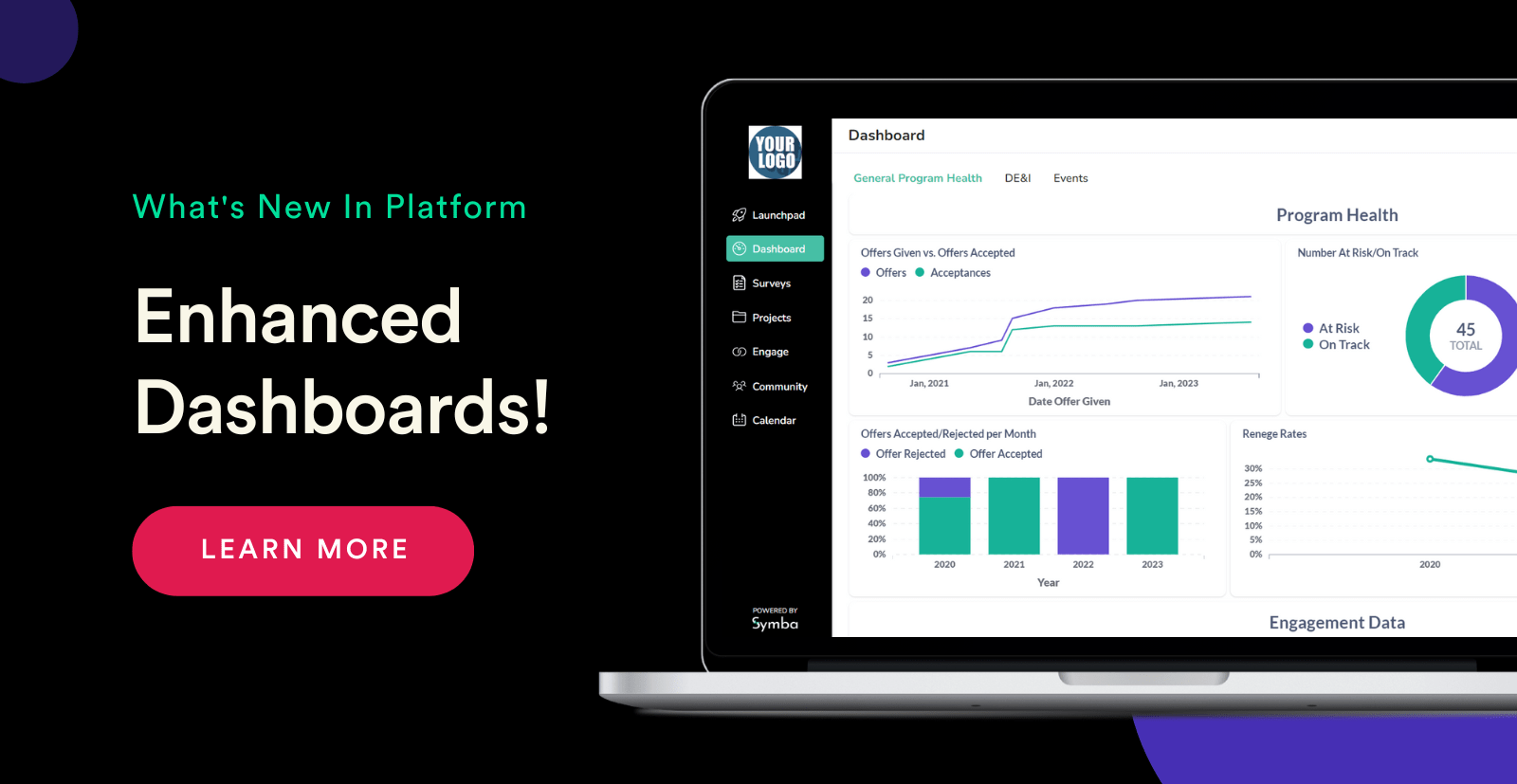Internships have the potential to be a catalyst for economic opportunity, but not all internships are equal. National Intern Day was created by WayUp to celebrate the growing leaders of tomorrow – interns.
This National Intern Day, Symba and Pay Our Interns are launching our Paid Internships Pledge, a commitment to fair compensation advocacy. Celebrate your company’s interns by assessing your own programs and signing the Paid Internships Pledge to support fair intern wages. Here is what you need to know about the ground rules when it comes to intern pay:
Rule #1: Pay your interns a minimum of $15 per hour.
According to RippleMatch 2022 survey data, 62% of interns are making between $15 - $30 an hour. But why do we set this range as the minimum? With inflation rates, housing costs, gasoline prices, and more all on the rise, interns simply cannot afford to take a job that does not pay them a livable wage. $15 an hour is the federal minimum wage in the United States and is higher in some states. You should be paying your interns at least the federal standard, or higher to meet state requirements, and should increase to meet fluctuations in the market, such as inflation.
So if interns already average $15 - $30 an hour, what is the purpose of advocating for #paidinternships? Well, this hourly rate is not widespread enough. Approximately 40% of internships remain unpaid. Many of those unpaid interns are minorities. Women, Black, and Hispanic talent are severely underrepresented in paid internships.
Given that paid internships are more likely to lead to full-time job offers, they can serve as an avenue to democratize access to preliminary jobs post-secondary education. Unpaid interns typically undergo a longer job-search than paid interns, and are less likely to be offered full time employment in the long run. This difference in job offers is so significant that unpaid interns receive the same number of job offers as students who have never even had an internship.
Year over year, paid interns are more likely to receive full-time offers and higher salaries than unpaid interns, as reported by NACE. When companies set goals for their interns and put their best offers forward, they gain and sustain dedicated employees that are not seen in unpaid internships.
Rule #2: Pay your interns a salary or hourly wage, not solely off stipends or commission.
Stipends rarely equal a minimum wage of $15/hour, and often only cover simple expenses. Unless your program is offering commission in addition to a base salary or hourly wage, this form of compensation also takes advantage of talent with limited skills in the industry and is unethical as the intern is not positioned to earn a fair wage.
When determining your hourly intern pay, the first step is to familiarize yourself with the laws in all states/regions where your interns are located. Work with your team to determine the correct hourly or salary compensation based on each area. Another factor to consider is your interns’ employee classification. This will help your program decide whether to use an hourly or salary payment method.
Rule #3: Support and learn from other companies’ internship programs.
There are hundreds of amazing internship programs out there offering bountiful benefits. Here are a few of the standout programs we admire, and you can find even more on WayUp’s top 100 internship programs list.
- Lumen: Ranked as WayUp’s #1 internship program of 2021, Lumen offers interns the chance to receive recognition for their hard work. They incorporate a positive feedback platform, Lumen Stars, throughout their program and award badges to interns demonstrating the company’s values.
- HubSpot: The most important aspect of HubSpot’s internship program is how deeply they care for their interns and their individual experiences. They prioritize growth and learning, while also supporting their interns outside of work. This approach creates a sense of community and belonging that boosts retention.
- Intuit: Interns working for Intuit are treated like any full-time employee. They are given the opportunity to build relationships and contribute to meaningful work. The program is guided by Intuit’s three core values: growth and learning, connection, and impact. A program guided by the company’s principals means interns will be in line with the company, should they be converted to full time hires.
What do all these internship programs, and WayUp’s top 100 list, have in common? They pay their interns. These examples, in particular, pay highly competitive rates up to $50 per hour. They also prioritize learning goals and community work to encourage growth.
Along with learning from other programs, you should also be learning from your own internship program. Without the assessment of career competencies and growth in skills, an internship runs the risk of being more like a temporary job. Make sure you are checking in with your interns about their goals and have a plan for them to learn by doing. Interning with a career growth plan leads to higher rates of full time employment, as both companies and interns get what they need from the symbiotic relationship.
As reported by National Association of Colleges and Employers, 56% of interns land a full-time job after their internship program. For the class of 2020, 66.4% accepted full-time offers. Internships are a way for companies to “try out” employees and determine if an intern would be a good fit for their long term goals. This “trial” period is shown to be all the more effective for paid internships.
This National Intern Day, demonstrate your commitment to paying interns equitable wages by signing Symba’s Paid Internship Pledge. 40% of internships today are unpaid – let’s work together bring that number down to 0!





